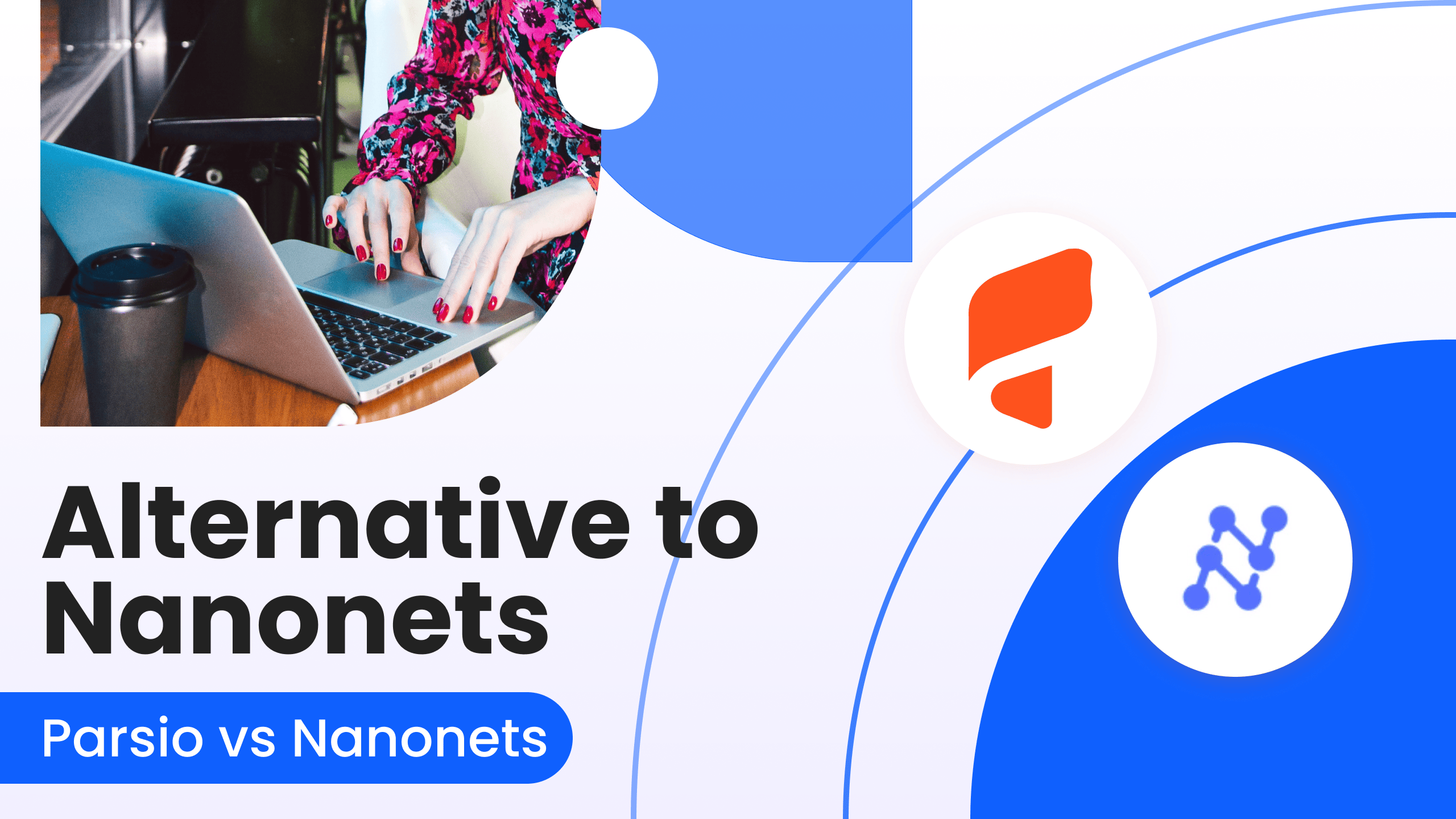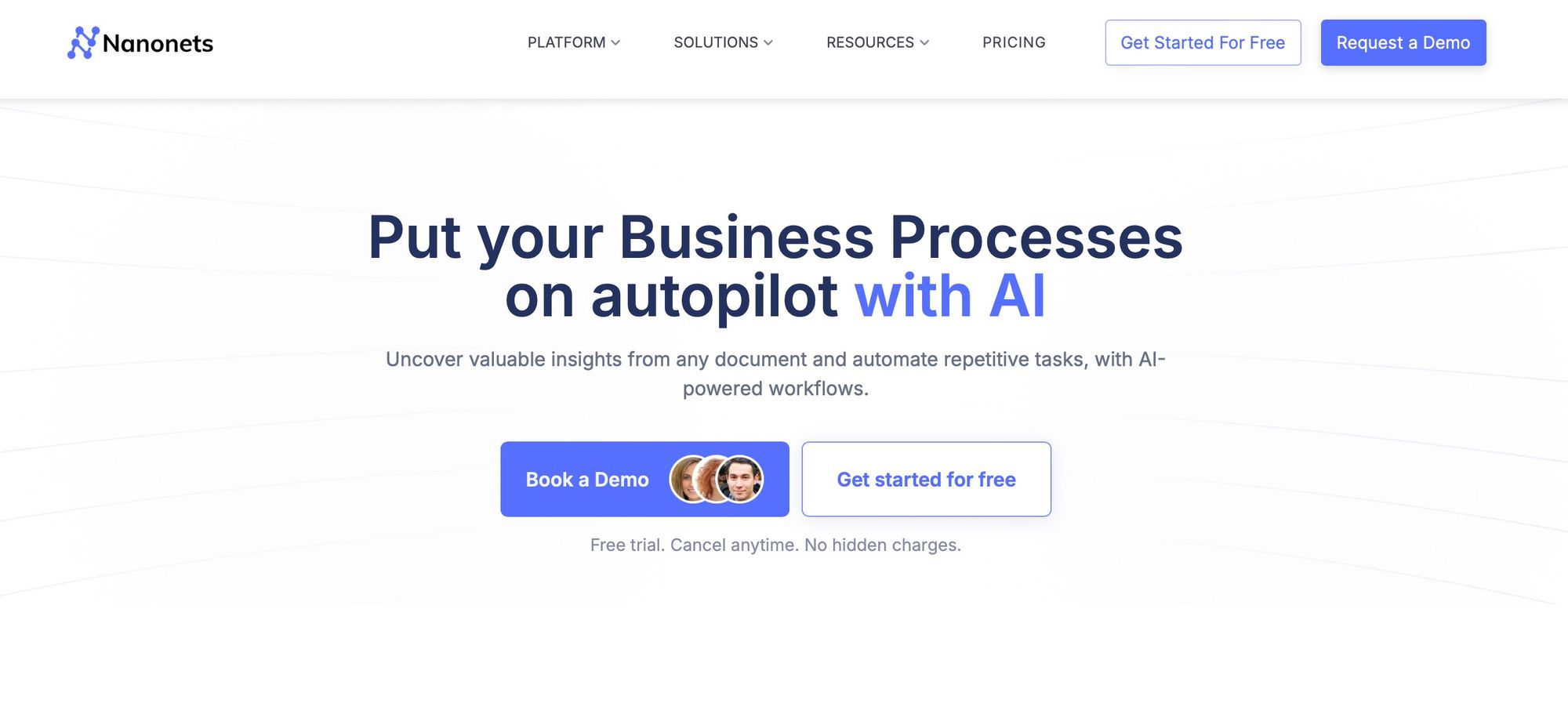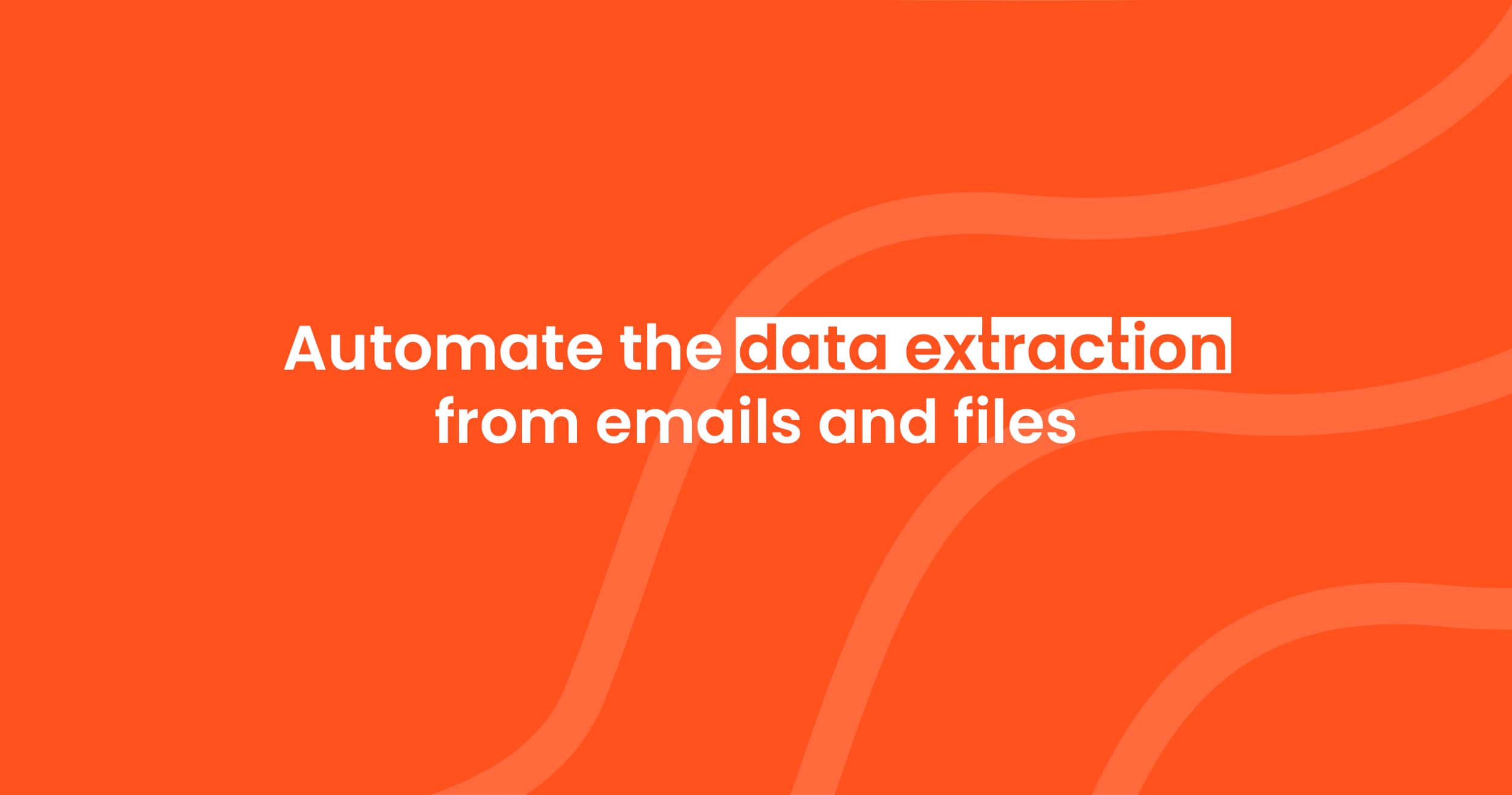Alternative to Nanonets: Parsio Vs Nanonets
In this article, we compare Parsio and Nanonets, two leading data extraction tools. We examine their features, use cases, and pricing to help you decide which one is best suited for your business needs.

You can also find a detailed feature comparison between Parsio and Nanonets here:

When it comes to automated data extraction, businesses often find themselves choosing between different tools. Two popular options are Parsio and Nanonets. Both tools offer robust solutions for parsing and extracting data from various documents like emails and PDFs. However, they differ in features, pricing, and supported use cases.

In this article, we'll dive deep into the world of Parsio and Nanonets, comparing their features, use cases, pricing, and more, to help you determine which one might be the better fit for your business.
Comparing Parsio and Nanonets: An In-Depth Analysis
Supported parser types
Both Parsio and Nanonets offer a range of parser types to cater to different document formats and use cases. Parsio supports parsing of emails, PDFs, images, and various file formats, including Excel, Word, and CSV. Nanonets, on the other hand, primarily focuses on document parsing, with support for PDFs, images, and some structured data formats.
Use cases
Parsio's versatility makes it a suitable choice for a wide range of use cases, from automating invoice processing and expense management to extracting data from job applications and real estate listings. Nanonets, while also capable of handling various document-related tasks, is often more focused on specific industries, such as finance, healthcare, and legal.

Pricing
Pricing is an important factor when choosing a document extraction solution. Parsio offers a transparent and flexible pricing model, with plans starting at $49 per month for the basic package and scaling up based on your usage and requirements. Nanonets, on the other hand, has a more complex pricing structure, with custom quotes based on your specific needs.
For 200 PDF pages, Parsio charges $49. Nanonets costs $499 per document type. This makes Parsio much cheaper for small to medium volume users.
Pre-trained models
Both Parsio and Nanonets offer pre-trained models to help you get started quickly. Parsio's pre-trained models cover a wide range of document types, while Nanonets' models are often tailored to specific industries or use cases.
Features: Email parsing
When it comes to email parsing, Parsio shines. It can extract valuable information from email inboxes, such as sender details, subject lines, attachments, and more, making it a powerful tool for automating tasks like lead generation and customer support.
Features: PDFs parsing
Both Parsio and Nanonets excel at PDF parsing, with the ability to accurately extract text, tables, and other structured data from PDF documents. Parsio, however, offers more advanced features, such as the ability to handle complex PDF layouts and extract data from multi-page documents.
Integrations
Integration capabilities are crucial for any data extraction tool. Parsio offers seamless integration with a wide range of third-party applications. You can easily connect it to your CRM, Google Sheets, or any other tool you use regularly via automation platforms such as Zapier and Make. This flexibility makes it easier to incorporate Parsio into your existing workflow without much hassle.
Nanonets also provides integration capabilities, but its options may be more limited compared to Parsio.

Why choose Parsio over Nanonets?
Parsio's versatility, user-friendly interface, and competitive pricing make it a compelling alternative to Nanonets. Its robust email parsing capabilities, advanced PDF handling, and extensive integration options can help you streamline your document-related tasks and enhance your overall productivity.
Furthermore, Parsio's transparent pricing structure and flexible plans make it accessible to businesses of all sizes, from small startups to large enterprises. This, combined with its robust feature set and reliable performance, makes Parsio a strong contender in the document extraction and data automation landscape.
Frequently Asked Questions
What are the key use case differences between Parsio and Nanonets?
The key differences lie in Parsio's broader range of use cases, including email parsing, expense management, and real estate data extraction, while Nanonets is more focused on specific industries like finance, healthcare, and legal.
How does Parsio's pricing structure differ from that of Nanonets?
Parsio offers a transparent and flexible pricing model with plans starting at $49 per month, while Nanonets' pricing is more complex, with custom quotes based on your specific requirements.
Al an example, for 200 PDF pages, Parsio charges $49. Nanonets costs $499 per document type.
What alternative services to Nanonets offer similar features as Parsio?
Some alternatives to Nanonets that offer similar features to Parsio include Docparser, Tabula, and Scraper API. However, Parsio's comprehensive suite of capabilities, including email parsing and advanced PDF handling, sets it apart from these competitors.
Which has better integration options for third-party applications, Nanonets or Parsio?
Both Parsio and Nanonets offer integrations with third-party applications. However, Parsio is generally easier to set up and integrates seamlessly with a wide range of business tools, making it the better option for users who prioritize ease of use.
Conclusion
Choosing the right data extraction tool depends on your specific needs. Parsio and Nanonets each have their strengths, but Parsio’s simplicity, affordability, and focus on text-based data extraction make it an excellent choice for many businesses. Whether you're processing emails, PDFs, or other text documents, Parsio offers a reliable and efficient solution.


